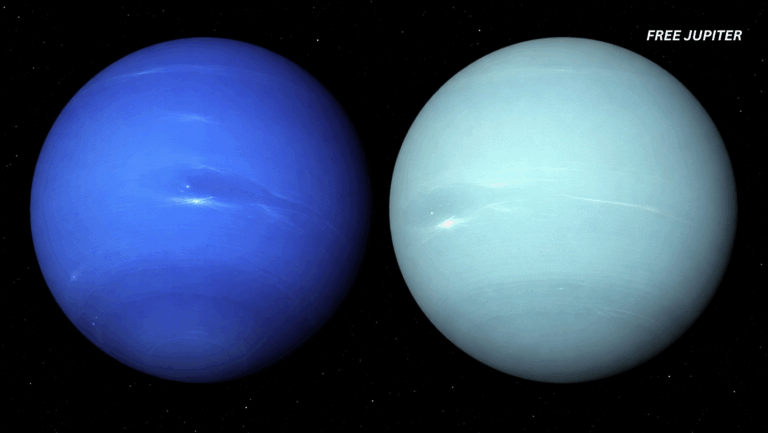Friendly Note: FreeJupiter.com shares general info for curious minds 🌟 Please fact-check all claims—and always check health matters with a professional 💙
Imagine a vast ocean, not on the surface, but buried deep beneath the Earth’s crust—an ocean so immense it holds three times the water of all our planet’s oceans combined. This isn’t a fantasy or a plot from a science fiction novel; it’s a groundbreaking discovery reshaping how we understand our planet’s inner workings.
What Exactly Is This Underground Ocean?
At roughly 400 miles (about 650 kilometers) below the Earth’s surface lies a layer of rock called the mantle. Within this mantle, scientists have found a mineral named ringwoodite—a high-pressure form of a common mineral called olivine.
What makes ringwoodite extraordinary is its ability to trap water inside its crystal structure, much like a sponge holds water in its pores.
But the water here isn’t liquid like the water in rivers or oceans. Instead, it exists in a unique form—a “fourth state” of water. This means water molecules are chemically bonded within the mineral’s structure, not free-flowing but still very much present.
This discovery challenges the traditional idea that water only exists as a liquid, solid (ice), or gas (vapor).
How Did Scientists Uncover This Hidden Water?
The key to this discovery lies in the study of seismic waves—vibrations caused by earthquakes that travel through the Earth. Seismologists noticed that waves slowed down in certain areas deep within the mantle, suggesting the presence of water. By analyzing these waves, researchers inferred that ringwoodite was soaking up water at these depths.
In 2014, a team led by scientists including Steve Jacobsen managed to find a natural sample of ringwoodite containing water trapped inside it, confirming the theory. This was a monumental moment because it provided physical evidence of water stored deep in the Earth’s mantle.
Why Is This Discovery So Important?
- A Whole-Earth Water Cycle:
Before this, scientists thought water mostly cycled between the oceans, atmosphere, and surface rocks. Now, it appears water also cycles deep inside the Earth, moving between the surface and mantle over millions of years. This deep cycle could influence volcanic activity, earthquakes, and even the formation of continents. - Explaining Earth’s Abundant Surface Water:
Earth is unique in the solar system for having vast amounts of liquid water on its surface. This underground ocean might help explain why Earth has so much water compared to other rocky planets like Mars or Venus. - Impact on Plate Tectonics and Volcanism:
Water stored in the mantle affects how rocks melt and move. When water is released from ringwoodite during tectonic processes, it can cause melting that fuels volcanic eruptions and shapes the Earth’s surface.
Read more: Voyager Probes Stumble Upon a Cosmic ‘Wall of Fire’ Outside Of Our Solar System
Other Hidden Water Reservoirs Inside the Earth
The ringwoodite discovery is just one piece of the puzzle. Water hides in many unexpected places underground:
- Mineral-Bound Water:
Minerals like serpentine and mica hold water chemically bound inside their structures. When these minerals change under heat and pressure, they release water, influencing geological activity. - Deep Aquifers:
Far below the surface, porous rocks can trap groundwater that’s been isolated for millions of years. These deep aquifers are difficult to access but represent significant water reserves. - Subduction Zones:
At the boundaries where tectonic plates collide, ocean water gets dragged down into the mantle. Some of this water is stored in minerals, while some returns to the surface through volcanoes. - Pore Water in Rocks:
Water seeps into cracks and small spaces in underground rocks. This pore water can be released during earthquakes or changes in pressure. - Mantle-Derived Water:
Water stored deep in the mantle can slowly migrate upward, contributing to volcanic activity and enriching crustal water supplies. - Ancient Oceanic Rocks:
Rocks formed under ancient oceans carry trapped seawater deep into the Earth, adding to the underground water budget. - Fluid Inclusions:
Tiny bubbles of water trapped inside minerals when rocks form also contribute, though in smaller amounts.
What Does This Mean for Our Future? A Closer Look at the Impact of Earth’s Hidden Ocean
The discovery of a massive underground water reservoir—trapped deep within the Earth’s mantle in the mineral ringwoodite—is more than just a fascinating geological fact.
It holds profound implications for our understanding of Earth’s past, present, and future, touching on everything from climate stability to natural disasters and even the origins of life.
Read more: Massive Cosmic Jets Bigger Than Our Galaxy Just Shot Out of a Black Hole
1. A New Perspective on Earth’s Water Cycle
Traditionally, the water cycle we learn about involves evaporation from oceans, rain, rivers, and groundwater near the surface. This discovery reveals a much deeper, hidden water cycle that connects the Earth’s surface with the mantle hundreds of miles below.
Water trapped in ringwoodite could slowly move between the deep Earth and the surface over millions of years, acting as a vast “reservoir” that helps regulate the amount of water on the surface.
This means Earth’s water isn’t just a surface phenomenon but a dynamic system involving the entire planet’s interior. Understanding this deep cycle could explain why Earth’s oceans have remained relatively stable over geological time, despite processes that should have otherwise drained or evaporated them.
2. Influence on Earth’s Geological Activity
Water plays a crucial role in how rocks melt and move inside the Earth. When water is released from minerals like ringwoodite due to changes in pressure and temperature, it can cause melting in the mantle.
This melting fuels volcanic eruptions and affects tectonic plate movements, which in turn influence earthquakes and mountain formation.
Knowing that there is so much water deep underground helps scientists better understand these geological processes. It could improve predictions of volcanic eruptions and earthquakes by revealing how water lubricates faults or triggers melting. This insight is vital for disaster preparedness and risk management.
3. Climate Stability and Long-Term Environmental Impact
The subterranean water reservoir may act as a natural buffer system for Earth’s climate. By slowly exchanging water with the surface oceans, it could help stabilize sea levels and global temperatures over millions of years.
This deep water cycle might have contributed to Earth’s climate resilience, helping maintain conditions suitable for life despite dramatic changes in solar radiation or atmospheric composition.
As climate change threatens surface water supplies, understanding this deep water store could guide future strategies for managing water resources sustainably. While we can’t directly tap into this deep water, knowing it exists reminds us of the complex natural systems that support life on Earth.
4. Insights into Earth’s Formation and the Origin of Water
One of the most intriguing implications is that some of Earth’s water may have originated from inside the planet itself, rather than being delivered solely by comets or asteroids early in its history. This challenges long-held theories about how Earth became a “blue planet” and opens new questions about the formation of other planets.
If water can be stored and cycled deep within rocky planets, it raises the possibility that other worlds—like Mars or exoplanets—might also harbor hidden water reservoirs, potentially influencing their habitability.
5. Future Research and Technological Challenges
Exploring this underground ocean directly is currently impossible due to the extreme depths and pressures involved. However, advances in seismic imaging and laboratory experiments simulating mantle conditions are helping scientists learn more about the composition, behavior, and replenishment of this deep water.
Future research aims to understand how this water interacts with Earth’s geology and biology. Could this deep water have played a role in the emergence of life by providing essential molecules or creating favorable conditions deep underground?
These questions are at the frontier of Earth sciences.
Read more: Astronomers Detect The Most Powerful Explosions in the Universe Since the Big Bang
In Conclusion: A Planet Full of Surprises
The discovery of this massive underground ocean reminds us that Earth is far more complex and mysterious than it appears. Beneath the familiar landscapes and oceans lies a hidden world of water cycling through rocks, shaping the planet from the inside out.
As science continues to explore these depths, we can expect more fascinating revelations that challenge what we think we know about our home planet. So next time you gaze at the ocean, remember: there’s an even bigger ocean beneath your feet, quietly holding the secrets of Earth’s past, present, and future.










